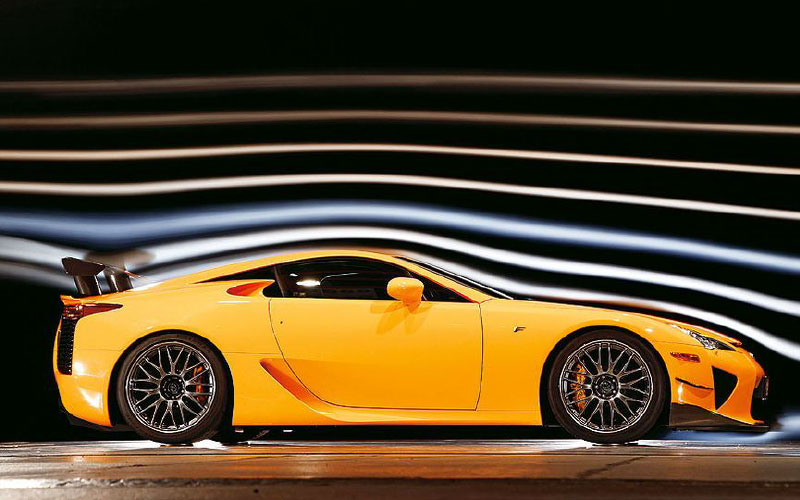WHAT MAKES A CAR A SUPERCAR
- supercars.com.gh
- April 29, 2022
While engines and transmissions are pretty easy to understand, you might not know how aerodynamics affect your car’s performance. This article overviews aerodynamics, the differences between drag and downforce, and how they can affect your car’s performance on the track or road.
Aerodynamics refers to how air moves around and interacts with objects. The goal of aerodynamic design is to minimise drag, which is the resistance that air offers to the motion of an object.
By reducing drag, aerodynamic design can improve fuel efficiency and performance. In some cases, it can also improve handling by reducing lift and increasing downforce.
The appropriate aerodynamics can provide your car with more downforce, which increases traction and helps you to go faster through turns. It also helps with fuel economy by reducing drag, making sure a car meets as little resistance as possible from the air it travels through, and it can make the car look fantastic.
For instance, most sports cars have amazing body shapes to enhance their aerodynamics which in turn contribute to their fantastic look.
In most scenarios, the shape and type of car are what largely determines how aerodynamic it is; car manufacturers such as Ferrari or Lamborghini are well known for their perfect and fantastic cars with proper aerodynamics.
Oversized wheels and low-profile tires will cause the front of your vehicle to dive under air pressure. When the front end goes low, the air is forced to flow over instead of under the car, causing a reduction in top speed. As a result, fuel efficiency benefits as well.
However, it also enhances the handling and acceleration of the vehicle. Some high-performance cars even have parts that move air smoothly across the underside of the car. Many also include a spoiler, also known as a rear wing, to keep the air from lifting the car’s wheels and making it unstable at high speeds.
- Lucid Air – 0.21 Cd
- Porsche Taycan Turbo – 0.22 Cd
- BMW 5 Series Efficient Dynamics – 0.22 Cd
- Skoda Octavia
- Hyundai Ioniq Electric
- Audi A8
- Tesla Model X
- Honda Insight
- Mercedes-Benz CLA
Here are some of the cars which you should avoid if you want the best
performance from your car .
- 1. Volkswagen beetle
- 2. Citroen 2CV
- 3. Nissan Patrol GR
- 4. Dodge Ram 1500
- 5. Hummer H2
- 6. Jeep Wrangler
- 7. Mercedes Benz G class
- 8. Lotus seven
- 9. Volkswagen Westphalia Camper
- 10. Ford Ranger
The SUVs above are harder to drive than cars due to their size. They have a high centre of gravity that reduces their handling; they’re more difficult to manoeuvre into tight spaces and have larger blind zones; however, becoming a proficient, safe SUV driver is an easily obtainable skill with practice.
Designers of the new Toyota Camry took a holistic approach to improving the vehicle’s aerodynamic performance. In addition to making the roof and body sides more slippery, they also reduced the size of the front and rear overhangs (distance from tyre to bumper) and revised the underbody panels.
These design changes allowed them to improve airflow around and under the vehicle. The result is a reduced drag of approximately 5 percent, which helps improve fuel efficiency.
For more information about automotive aerodynamics and other related topics, please visit our website or follow us on Instagram and Twitter.
Recent Post
Have Any Question?
If you have a question, call or email us.
We will get back to you as soon as possible!
Categories
WhatsApp us











